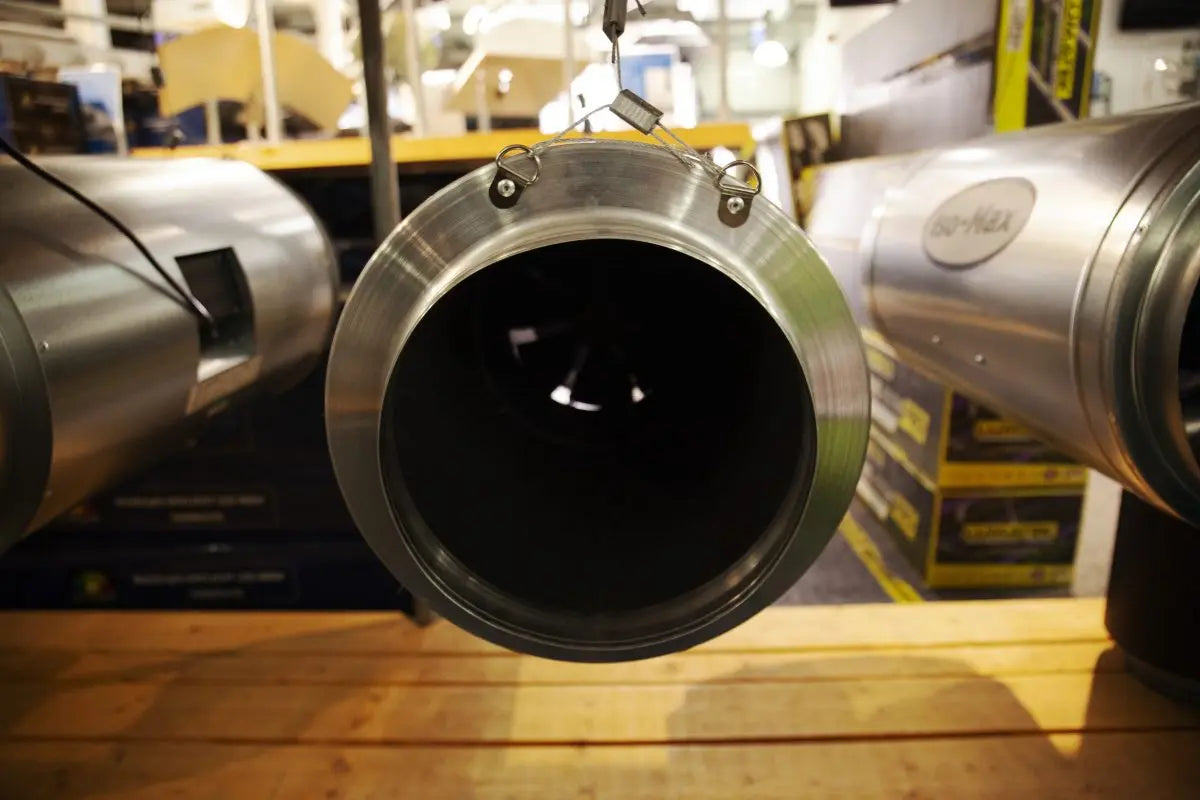Why Do I Need a Carbon Filter at All?

An adequate extraction system is pretty much essential for an indoor grow setup and a carbon filter is an important part of it, as we will explain below.
Grow lights produce heat which, if allowed to build up, takes the temperature in the grow space above the ideal range for plant growth. Also, plants need CO2 in order to photosynthesise. They use up the CO2 in the air space and as the CO2 level in the grow space goes down, so does the rate of photosynthesis.

The upper ideal temperature is around 28 degrees C (without any CO2 supplementation). If you are using CO2 supplementation then the ideal temperature is much higher (around 32 degrees C). An extraction system removes warm, CO2 depleted air from the grow space. As it does this, cooler air with normal levels of CO2 in it is sucked into the grow space to replace it.
Unfortunately, the air that is extracted out of the grow space will almost certainly smell of plants and will end up outside somewhere. An effective carbon filter will remove the smell of plants growing before it ends up upsetting neighbours or anyone else.
The type of carbon typically found in a carbon filter is called "activated carbon". This is made up of tiny granules which make it look and feel like a fine powder. The smaller the granule the more surface area the carbon has for a given volume of it. tiny granules increases the overall surface area which is exposed to the air as it passes through it.
Activated carbon is very good at absorbing molecules in the air that create odours. The large surface area gives the carbon filter more opportunity to absorb these odours as the air passes through it.
What makes a carbon filter effective?
There are three things that make a carbon filter effective:
- The quality of the carbon used in it. There are different grades of activated carbon. Some grades are more "porous" (have a larger surface area) than others. The better the grade, the better the odour absorption will be.
- The bed depth. The bed is the cylinder of activated carbon that the air is pulled through. The thicker the bed, the better the filter will be at absorbing odours.
- The quality of the manufacturing. The filter needs to be made well to work well. A couple of examples of poor manufacturing might be a badly fitting duct connection, an incompletely filled bed, or a case made of thin metal that dents easily.
So, What are the Differences Between Budget and Pro Filters?
When it comes to budget filters, there is a difference between a well-known branded budget and a budget one from an unknown Chinese company.
Budget filters have a smaller bed depth than Pro filters. However, there is a difference between smaller and inadequate. A branded budget filter will have a bed depth that is good enough to work properly and remove odours. Really cheap unbranded budget filters often don't. Pro filters have thicker beds, and one Pro brand, CarboAir, even offers a choice of bed thicknesses.
Pro filters are robustly made. Hobby filters are sometimes made of flimsy materials.
Pro filters have a working life of around 2 years. Hobby filters have a working life of around half that or less (9-12 months). Although Pro filters do cost a bit more they are less than twice the price of a hobby filter meaning that in the long run they are actually better value for money.
Our Range of Carbon Filters

- Rhino Hobby - Rhino Hobby may be a Hobby Filter but it is still very effective and well made. The bed depth is 30mm which is good enough to deal with smells and odours as it needs to.
- Rhino Pro - Rhino Pro Filters have a 50mm bed depth which can deal with the worst smells. It also gives the Rhino Pro a lifespan of 2 years or more.
- CarboAir 50 - Like the Rhino Pro, the CarboAir 50 has a 50mm bed depth for dealing with virtually all odours. CarboAir 50 filters were originally designed for smaller rooms but they work fine in larger rooms too. They are guaranteed for 2 years.
- Carboair 60 - These are similar to the Carboair 50 but have a slightly higher air flow rating meaning they can be matched with slightly more powerful inline fans where the air spends less time in the filter. They are intended for medium to large rooms.
- CarboAir 100 - These have a huge bed depth which can deal with the huge airflow from the most powerful duct fans. When used with normal power fans they offer total reassurance that no smells will remain in the air being ducted out. Intended for larger rooms.

